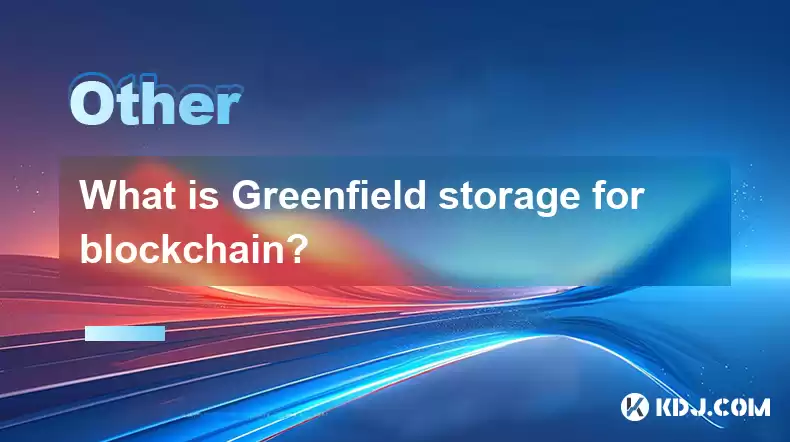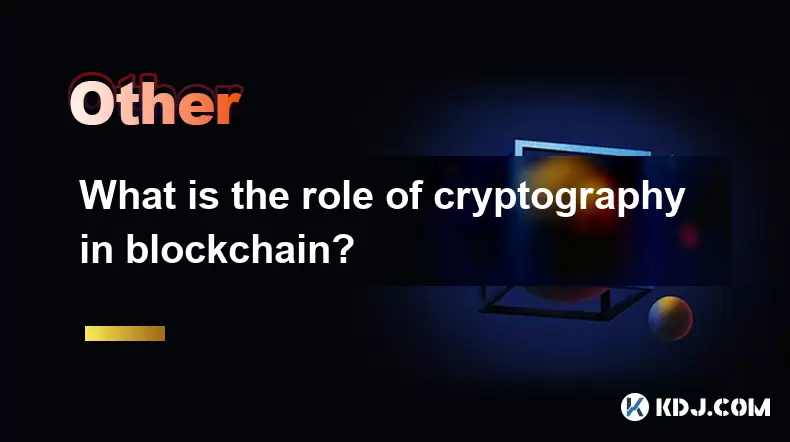-
 Bitcoin
Bitcoin $113800
0.32% -
 Ethereum
Ethereum $3477
-0.14% -
 XRP
XRP $2.873
-2.20% -
 Tether USDt
Tether USDt $0.9999
0.02% -
 BNB
BNB $749.3
-0.40% -
 Solana
Solana $161.7
-0.55% -
 USDC
USDC $0.9998
0.00% -
 TRON
TRON $0.3268
0.28% -
 Dogecoin
Dogecoin $0.1976
-0.03% -
 Cardano
Cardano $0.7250
2.27% -
 Hyperliquid
Hyperliquid $39.18
2.73% -
 Sui
Sui $3.457
1.70% -
 Stellar
Stellar $0.3832
1.16% -
 Chainlink
Chainlink $16.11
1.49% -
 Bitcoin Cash
Bitcoin Cash $539.7
1.25% -
 Hedera
Hedera $0.2410
2.21% -
 Ethena USDe
Ethena USDe $1.001
0.04% -
 Avalanche
Avalanche $21.35
0.21% -
 Toncoin
Toncoin $3.716
3.86% -
 Litecoin
Litecoin $109.3
2.88% -
 UNUS SED LEO
UNUS SED LEO $8.965
0.04% -
 Shiba Inu
Shiba Inu $0.00001214
1.02% -
 Polkadot
Polkadot $3.589
1.85% -
 Uniswap
Uniswap $9.083
1.24% -
 Monero
Monero $299.3
0.98% -
 Dai
Dai $1.000
0.02% -
 Bitget Token
Bitget Token $4.301
0.43% -
 Pepe
Pepe $0.00001045
1.32% -
 Cronos
Cronos $0.1314
0.51% -
 Aave
Aave $257.6
2.04%
What is Greenfield storage for blockchain?
Greenfield storage uses blockchain for decentralized, secure data storage, distributing data across nodes to enhance security and scalability in cryptocurrency applications.
Apr 15, 2025 at 11:07 am

Greenfield storage for blockchain refers to a decentralized storage solution that leverages blockchain technology to provide secure, scalable, and efficient data storage. Unlike traditional centralized storage systems, Greenfield storage operates on a peer-to-peer network, ensuring that data is distributed across multiple nodes, enhancing security and reducing the risk of data loss or manipulation. This innovative approach to data storage is particularly appealing in the cryptocurrency circle, where data integrity and security are paramount.
The Concept of Greenfield Storage
Greenfield storage is built on the principle of decentralization, which is a core tenet of blockchain technology. In a Greenfield storage system, data is broken down into smaller pieces and distributed across a network of nodes. Each node in the network holds a portion of the data, and the entire dataset can be reconstructed by combining these pieces. This method not only enhances data security but also improves the efficiency of data retrieval and storage.
Benefits of Greenfield Storage in Blockchain
One of the primary benefits of Greenfield storage in the blockchain ecosystem is enhanced security. Since data is distributed across multiple nodes, it becomes extremely difficult for malicious actors to compromise the entire dataset. Additionally, Greenfield storage offers improved scalability, as the network can easily accommodate more data by adding more nodes. This scalability is crucial for blockchain applications that require large amounts of data storage, such as decentralized finance (DeFi) platforms and non-fungible token (NFT) marketplaces.
How Greenfield Storage Works
To understand how Greenfield storage works, it's essential to delve into its operational mechanics. When a user wants to store data on a Greenfield storage network, the data is first encrypted and then split into smaller chunks. These chunks are then distributed across the network of nodes. Each node stores a piece of the data and maintains a record of its location on the blockchain. When a user wants to retrieve the data, the system locates the relevant chunks and reconstructs the original data.
Implementing Greenfield Storage: A Step-by-Step Guide
For those interested in implementing Greenfield storage for their blockchain projects, here is a detailed guide on how to set it up:
- Choose a Greenfield Storage Platform: There are several platforms available that offer Greenfield storage solutions, such as Filecoin, Storj, and Sia. Research these platforms to determine which one best suits your needs.
- Set Up a Node: To participate in a Greenfield storage network, you need to set up a node. This involves downloading and installing the software provided by the chosen platform. Follow the platform's instructions to configure your node.
- Encrypt and Split Data: Before uploading your data to the network, you need to encrypt it and split it into smaller chunks. Use encryption tools and data splitting software to prepare your data for storage.
- Upload Data to the Network: Once your data is prepared, upload it to the Greenfield storage network. The platform will handle the distribution of your data across the network of nodes.
- Retrieve Data: When you need to access your data, use the platform's retrieval tools to locate and reconstruct the data from the network.
Use Cases of Greenfield Storage in Cryptocurrency
Greenfield storage has numerous applications within the cryptocurrency circle. One of the most prominent use cases is in the storage of blockchain data. As blockchain networks grow, the amount of data they need to store increases exponentially. Greenfield storage provides a scalable solution for storing this data securely and efficiently.
Another significant use case is in the realm of decentralized applications (dApps). Many dApps require large amounts of data storage to function effectively. By utilizing Greenfield storage, dApps can ensure that their data is secure and accessible, enhancing their overall performance and user experience.
Security Measures in Greenfield Storage
Security is a critical aspect of Greenfield storage. To ensure the integrity and confidentiality of stored data, Greenfield storage systems employ several security measures. These include encryption, data redundancy, and consensus mechanisms. Encryption ensures that data is protected from unauthorized access, while data redundancy ensures that multiple copies of the data are stored across the network, reducing the risk of data loss. Consensus mechanisms, such as proof-of-replication and proof-of-spacetime, ensure that nodes are storing data correctly and are incentivized to maintain the integrity of the network.
Challenges and Considerations
While Greenfield storage offers numerous benefits, it also comes with its own set of challenges and considerations. One of the primary challenges is the complexity of setting up and maintaining a Greenfield storage network. It requires technical expertise and resources to manage the nodes and ensure the network's smooth operation.
Another consideration is the cost associated with Greenfield storage. While it can be more cost-effective than traditional centralized storage solutions in the long run, the initial setup and ongoing maintenance costs can be significant. Users need to weigh these costs against the benefits of enhanced security and scalability.
Frequently Asked Questions
Q: How does Greenfield storage differ from traditional cloud storage?
A: Greenfield storage is decentralized and operates on a peer-to-peer network, whereas traditional cloud storage is centralized and managed by a single entity. This decentralization enhances security and scalability in Greenfield storage.
Q: Can Greenfield storage be used for storing sensitive data?
A: Yes, Greenfield storage can be used for storing sensitive data. It employs encryption and data redundancy to ensure the security and confidentiality of stored data.
Q: What are the main platforms offering Greenfield storage solutions?
A: Some of the main platforms offering Greenfield storage solutions include Filecoin, Storj, and Sia. Each platform has its own unique features and benefits.
Q: How does Greenfield storage impact the performance of blockchain networks?
A: Greenfield storage can improve the performance of blockchain networks by providing scalable and efficient data storage solutions. This can lead to faster transaction processing and better overall network performance.
Disclaimer:info@kdj.com
The information provided is not trading advice. kdj.com does not assume any responsibility for any investments made based on the information provided in this article. Cryptocurrencies are highly volatile and it is highly recommended that you invest with caution after thorough research!
If you believe that the content used on this website infringes your copyright, please contact us immediately (info@kdj.com) and we will delete it promptly.
- Solana's Next Chapter: SOL Prediction and the SOLF Token Buzz
- 2025-08-03 18:30:16
- Token Chart Buzz: Analysts Eye Potential Price Increase with Mutuum Finance (MUTM)
- 2025-08-03 18:30:16
- SOLF Token vs. BONK: Predicting a $300 Solana in 2025?
- 2025-08-03 16:30:16
- Sei, Injective, and Bitcoin Dominance: Navigating the Crypto Landscape
- 2025-08-03 16:50:15
- UK Lifts Ban on Crypto ETNs: Bitcoin Set for Retail Boom?
- 2025-08-03 16:30:16
- Coin Master Free Spins: Maximize Your Game with Daily Links (August 2025)
- 2025-08-03 16:50:15
Related knowledge

What is the difference between on-chain and off-chain transactions?
Aug 02,2025 at 04:22pm
Understanding On-Chain TransactionsOn-chain transactions refer to digital asset transfers that are recorded directly on a blockchain ledger. These tra...

What is a node's role in a blockchain network?
Aug 03,2025 at 03:16pm
Understanding the Function of a Node in a Blockchain NetworkA node is a fundamental component of any blockchain network, acting as a participant that ...

What is the double-spending problem and how does blockchain prevent it?
Aug 02,2025 at 01:07pm
Understanding the Double-Spending ProblemThe double-spending problem is a fundamental challenge in digital currency systems where the same digital tok...

What is the difference between a blockchain and a database?
Aug 01,2025 at 09:36pm
Understanding the Core Structure of a BlockchainA blockchain is a decentralized digital ledger that records data in a series of immutable blocks linke...

How does blockchain handle scalability?
Aug 02,2025 at 02:58pm
Understanding Blockchain Scalability ChallengesBlockchain scalability refers to a network's ability to handle an increasing volume of transactions wit...

What is the role of cryptography in blockchain?
Aug 03,2025 at 03:42pm
Understanding the Foundation of Blockchain SecurityCryptography is the cornerstone of blockchain technology, providing the essential tools to ensure d...

What is the difference between on-chain and off-chain transactions?
Aug 02,2025 at 04:22pm
Understanding On-Chain TransactionsOn-chain transactions refer to digital asset transfers that are recorded directly on a blockchain ledger. These tra...

What is a node's role in a blockchain network?
Aug 03,2025 at 03:16pm
Understanding the Function of a Node in a Blockchain NetworkA node is a fundamental component of any blockchain network, acting as a participant that ...

What is the double-spending problem and how does blockchain prevent it?
Aug 02,2025 at 01:07pm
Understanding the Double-Spending ProblemThe double-spending problem is a fundamental challenge in digital currency systems where the same digital tok...

What is the difference between a blockchain and a database?
Aug 01,2025 at 09:36pm
Understanding the Core Structure of a BlockchainA blockchain is a decentralized digital ledger that records data in a series of immutable blocks linke...

How does blockchain handle scalability?
Aug 02,2025 at 02:58pm
Understanding Blockchain Scalability ChallengesBlockchain scalability refers to a network's ability to handle an increasing volume of transactions wit...

What is the role of cryptography in blockchain?
Aug 03,2025 at 03:42pm
Understanding the Foundation of Blockchain SecurityCryptography is the cornerstone of blockchain technology, providing the essential tools to ensure d...
See all articles

























































































